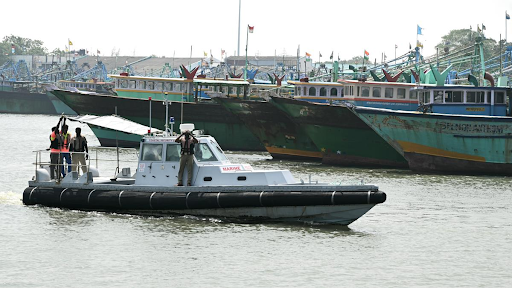Description

Source: Defence24
Disclaimer: Copyright infringement not intended.
Context
The President of Ukraine recently announced that Ukraine has successfully tested its first ballistic missile, Hrim-2, manufactured by the country’s defence industry.
Details
- The Hrim-2, also known as "Grom" or "Sapsan," is the designation of a short-range ballistic missile system developed by Ukraine.
- The development of the Hrim-2 began following the 2014 Russian annexation of Crimea, with the missile first being publicly revealed at a defense exhibition in Kyiv in 2014.
- Saudi Arabia was responsible for providing the financial support necessary to get the project off the ground, contributing roughly $40 million towards the research and development phase of the project.
- In April 2019, two prototypes were manufactured-one for Saudi Arabia to test and the other for testing by the Ukrainian Armed Forces.
- Export variant Hrim-2 has a range limited to 280 kilometres, within the limit put by Missile Technology Control Regime of 300 kilometres.
- For Ukrainian military needs, however, the range of this system has been extended to 700 km.
About Ballistic missile
- A ballistic missile is a missile that traces a ballistic path in flight to deliver one or more warheads upon the target.
- In contrast to cruise missiles, which are aerodynamically powered and guided in flight for the most part along their trajectory, ballistic missiles are entirely powered only for a short phase of their flight.
- The trajectory of ballistic missiles can be divided into three distinct phases:
-
- Powered Phase: In this initial phase, the guided missile draws its power from rocket engines.
- Free-Flight Phase: Subsequent to the burnout of the engines, the missile traces a ballistic trajectory, due to action by gravity and momentum. This phase for the long-range and intercontinental missiles involves reaching a sub-orbital altitude.
- Re-Entry Phase: The missile re-enters the Earth's atmosphere and is guided toward its target, where it impacts at high speeds, sometimes surpassing 20,000 km/h.
- Types of Ballistic Missiles:
- Short-Range Ballistic Missile (SRBM): Range of 300 to 1,000 kilometers.
- Medium range: 1,000 to 3,500 kilometers.
- Intermediate Range BM: 3,500 to 5,500 kilometers.
- Intercontinental BM: Range greater than 5,500 kilometers.
- SLBM - Submarine-launched ballistic missile.
 Further Reading:
Further Reading:
INDIAN MISSILES: OVERVIEW:
https://www.iasgyan.in/blogs/indian-missiles-an-overview#:~:text=The%20IGMDP%2C%20managed%20by%20the,%2C%20Nag%2C%20and%20Agni%20series.&text=Completion%20announced%20on%20January%208,by%20the%20Indian%20armed%20forces.
BASICS OF MISSILES:
https://www.iasgyan.in/blogs/the-basics-of-missiles
Sources:
Defence24
|
PRACTICE QUESTION
Q: Explain the scientific principles underlying the operation of cruise missiles and ballistic missiles. How do the differences in their propulsion systems, guidance mechanisms, and trajectories influence their performance and strategic utility? (250 Words)
|






 Further Reading:
Further Reading:



